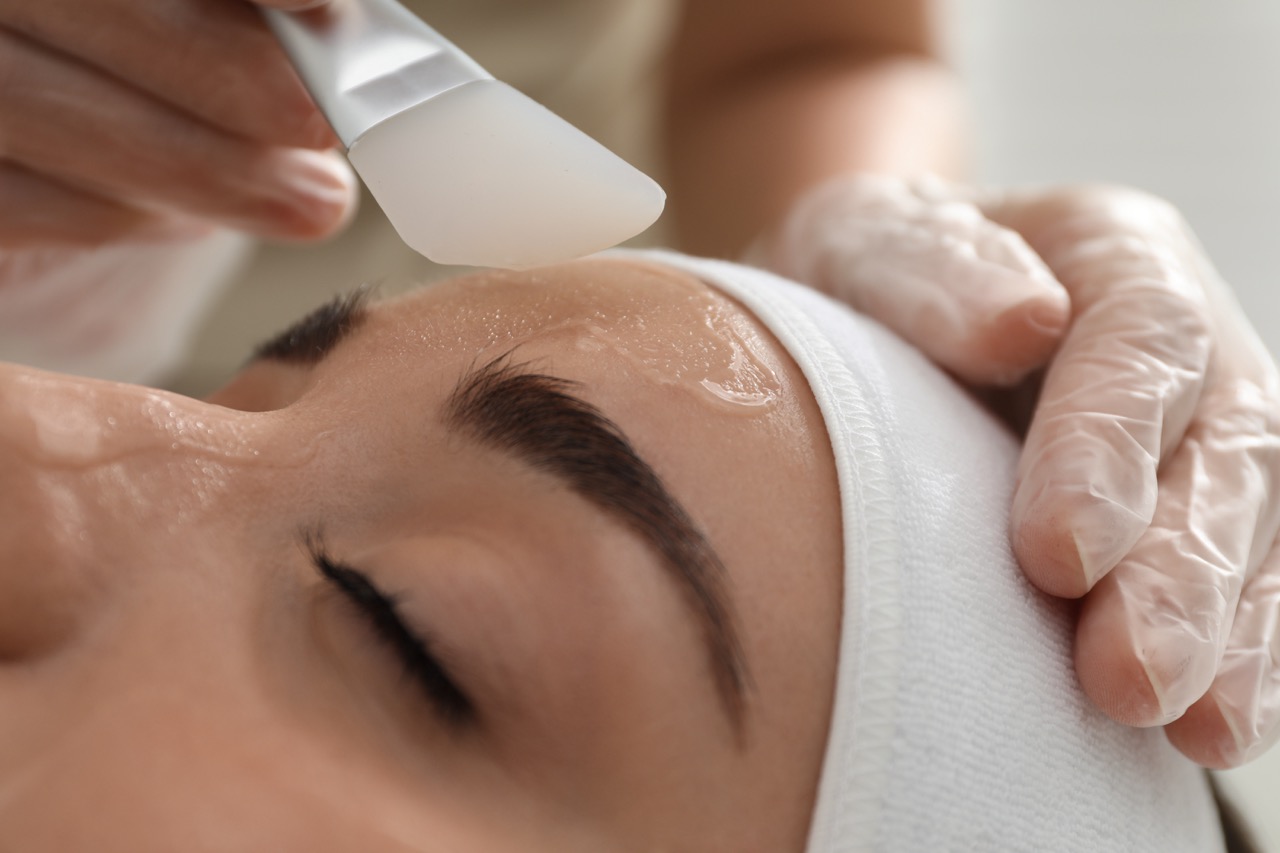Chemical peels are one of the most popular skin rejuvenation treatments available today. They target a wide variety of issues, are safe for all skin tones and types, and provide long lasting results. But many people don’t know what to expect before getting their first chemical peel. Keep reading to uncover the journey of a chemical peel and explore what happens before, during, and after so you can properly prepare for this impressive treatment.
Frequently Asked Questions
Before diving into the specifics about chemical peel effects, it’s important to have a full understanding of the treatment itself. Here are answers to some common questions that will help you see various chemical peel benefits and truly grasp why they’re so beneficial.
Why get a chemical peel?
A chemical peel is a skin resurfacing treatment that uses a liquid acidic solution to exfoliate the top layers of the skin. The peel can be light, or it can go deeper, depending on the type of formula that’s used and the end goal.
Because peels result in you shedding several layers of skin, they improve skin texture and tone, help reduce the appearance of acne or hyperpigmentation, and can even help treat fine lines and wrinkles. So, who are chemical peels good for? Ultimately, they’re ideal for anyone looking to address any of the issues just mentioned or someone simply looking to uncover smoother, brighter skin.
When is chemical peel season?
Although you can generally get a chemical peel any time of the year, the treatment does require some special prep before that makes it a bit easier to book your appointment during certain times of the year. So, chemical peel season is the fall and winter months—aka when the sun is typically out less. You can’t have a sunburn when you get a chemical peel, and it’s important to reduce sun exposure afterwards for best results, so you’re setting yourself up for better success if you get your peel during these months.
How does a chemical peel compare to other popular treatments?
Chemical peels are a very effective treatment but they aren’t the only one out there. So, how do they stack up?
Chemical peel vs. IPL
IPL facials use a special laser to correct age spots, sun damage, freckles, superficial vessels, and rosacea. It does not address fine lines and wrinkles or acne. Both treatments have their place depending on your specific skin goals.
Chemical peel vs. facial
Facials can work to address a variety of skin concerns depending on the products and techniques used during them. But they don’t include a chemical peel solution that will remove any layers of the skin, so the results don’t last as long and aren’t as wide-ranging. This makes facials an ideal treatment for sensitive skin.
Preparing For Your Chemical Peel
When it’s time to prepare for your chemical peel, it’s crucial for you to consider the chemical peel do’s and don’ts. Following these important steps before your treatment begins will help ensure the treatment is as effective as possible and help you heal properly.
Avoid sun exposure
As mentioned earlier, you can’t get a chemical peel with a sunburn. So, for about 10 days before your treatment, avoid direct exposure to the sun whenever possible and use sunscreen for protection each day. Also stay away from artificial tans—whether from a tanning bed or self tanning product—during this time.
Avoid excess exfoliation
You’ll need to stop the use of prescription acne medications, retinol and exfoliating active ingredients at least 1 week before your chemical peel. This includes things like scrubs, acids, benzoyl peroxide, etc.
Ensure proper hydration
In the week leading up to your peel, be sure to drink enough water to stay properly hydrated.
Moisturize your skin
Use a gentle moisturizer to keep your skin hydrated and plump before your treatment.
Avoid shaving/waxing
Avoid shaving or waxing your face for 1 week leading up to your peel.
What to Expect During Your Peel
A chemical peel isn’t typically relaxing for people as other spa treatments might be but it’s also not painful as some fear it may be.
The prep
First, your face will be cleaned with a gentle cleanser to remove any makeup and excess oil to ensure the peel properly absorbs into the skin. A prep solution will also be applied to make sure your skin is ready for the peel solution.
The application
The peel solution is applied in either one or several different layers. After the peel solution is applied, you may experience a variety of sensations from tingling to temperature changes that make it feel like your skin is warming or cooling to tightness that feels as if your skin is tightening. All of these are normal and shouldn’t feel too uncomfortable.
We offer two different peels: our Signature Chemical Peel and the Peptide Radiance Peel. Our signature service uses a custom peel solution picked to fit your skin type and needs and works deep into the layers of the skin, so you’ll experience little to no skin flaking afterwards. The Peptide Radiance Peel is a safe option for beginners who want great results with a more gentle introduction to chemical peels.
Overall, you shouldn’t worry too much about what a chemical peel feels like because it’s similar to many other face treatments. But if you need a little more to put your mind at ease, you can click here to watch a video of a chemical peel in action so you know exactly what to expect!
What to Expect After Your Peel
The goal of a chemical peel is to initiate cell turnover and encourage peeling to uncover fresh skin. As this is happening, you can expect a few things to happen.
– Your skin may be slightly red or discolored for a few days following your peel.
– Flaking, peeling, or shedding of the skin may begin roughly 3 days after your peel—it’s essential to avoid picking/peeling it.
– Your skin may feel dry or tight.
The chemical peel healing process does require some special action on your part to ensure everything goes smoothly. Here are some chemical peel aftercare tips to keep in mind.
Avoid makeup
Your face may be sensitive immediately after your peel, so it’s best to avoid putting on makeup for at least 24 hours following your peel.
Avoid exercise
It’s best to keep your skin cool and dry after your appointment. Therefore, avoiding exercise or any other activities that will make you sweat (steam rooms, saunas, etc.) for at least 24 hours after your peel is ideal.
No manual or chemical exfoliation
Until your skin heals, you must avoid peeling, picking, scrubbing, or using chemical exfoliants like retinoids for at least 10 days following your peel.
Moisturize as needed
Apply a gentle moisturizer at least twice a day, or more if needed, to keep your skin hydrated.
Protect your skin from the sun
Although you’ll want to avoid direct sunlight until your skin has fully healed, when you do go outdoors, be sure to wear sunscreen. Try wearing a hat or other protective covering to shield your face whenever possible as well.
Are Chemical Peels Worth It?
After seeing what goes into a chemical peel from start to finish, you might find yourself asking that question. Anyone who has gotten one before will undoubtedly say yes. Whether you’re getting a chemical peel for dark spots, minimizing pores, plumping, anti-aging, brightening, reducing fine lines and wrinkles, or anything in between, the chemical peel benefits are almost countless.
Start Your Chemical Peel Journey Today
Blurr’d Lines Med Spa is ready to assist you on your chemical peel journey whenever you’re ready! We use only the highest quality products and have expert staff to answer any remaining questions you have and perform your peel when the time comes. If you’re in the Dartmouth, MA area, you can fill out this quick form to conveniently book your appointment now.

